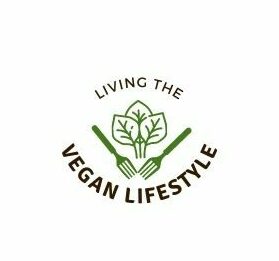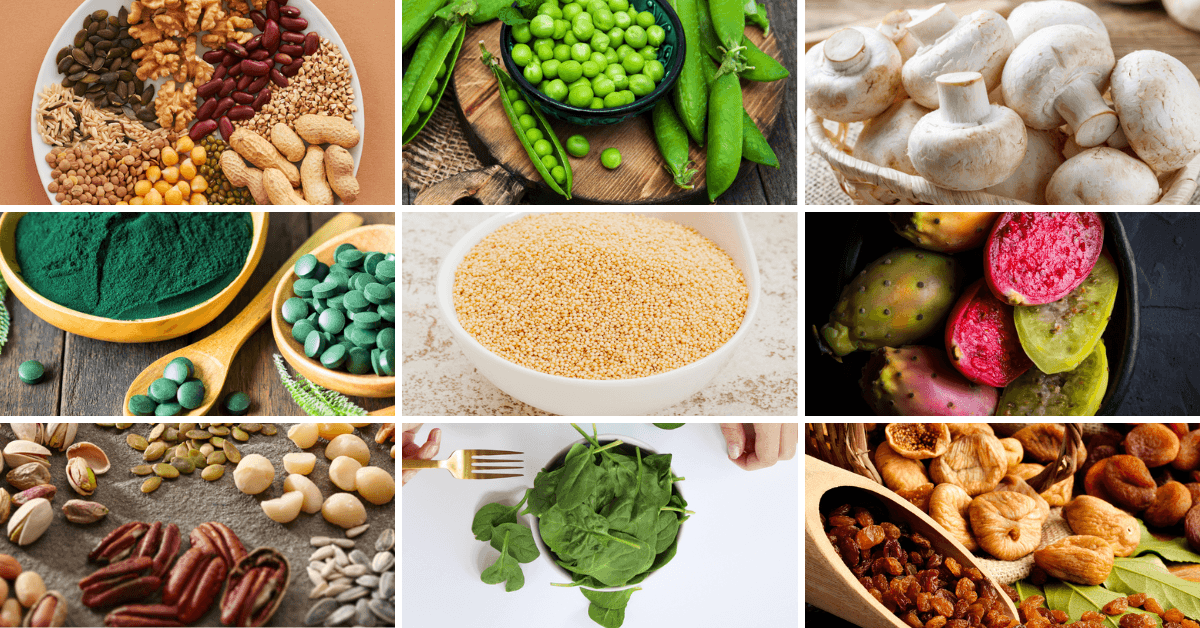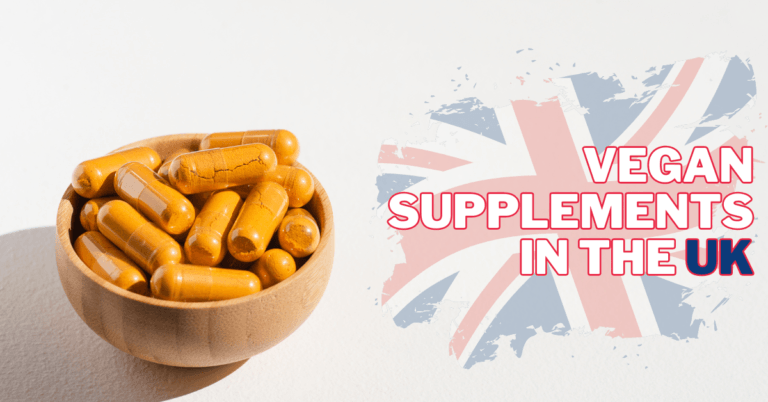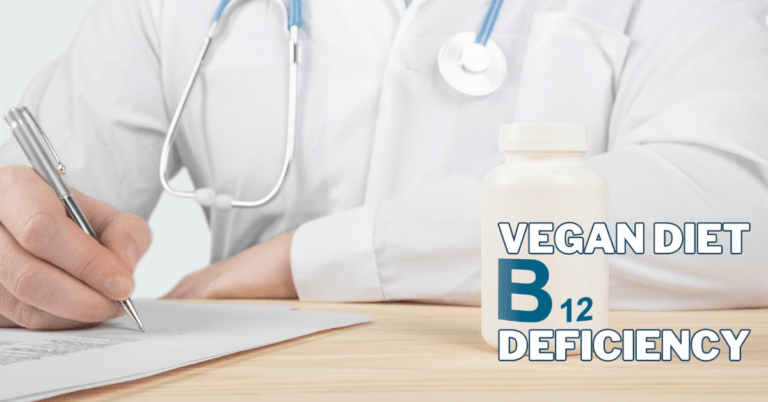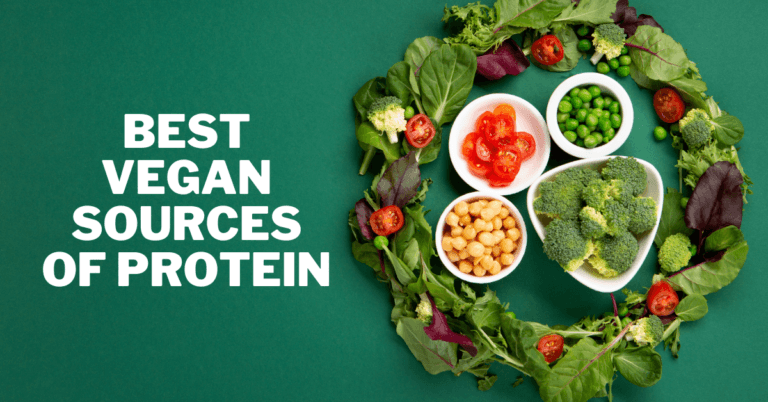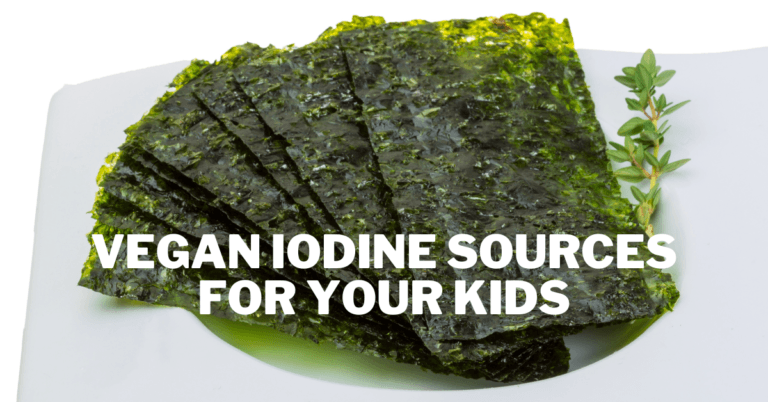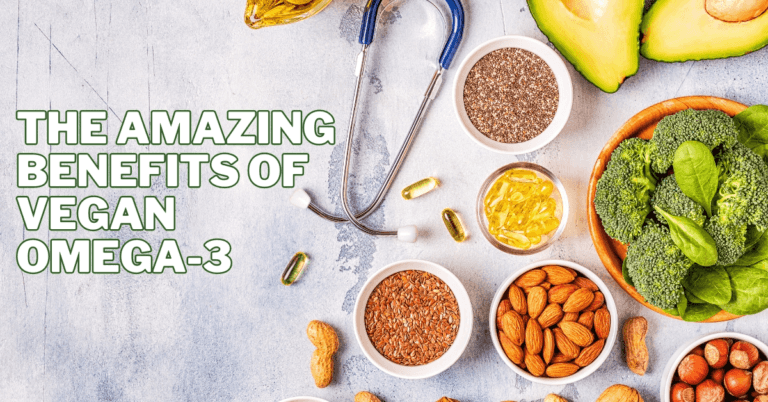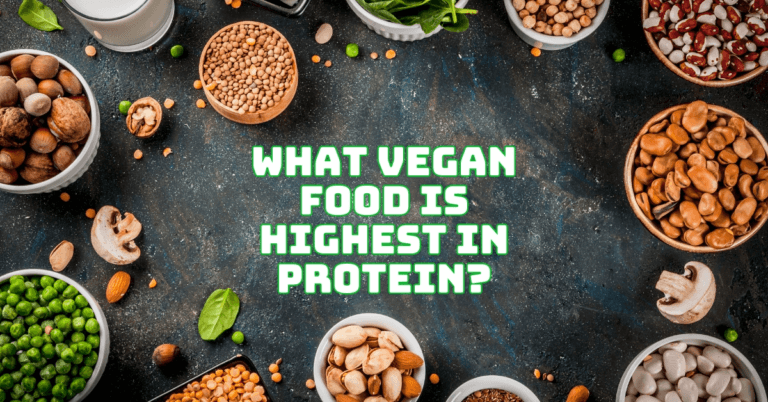Best Vegan Sources For Anemia
Best Vegan Sources For Anemia
Anemia, a condition with insufficient red blood cells or hemoglobin in the body, can lead to fatigue, weakness, and other health issues.
While it is commonly associated with deficiencies in nutrients like iron, vitamin B12, and folate, adopting a vegan lifestyle doesn't have to mean compromising your iron levels.
A well-planned vegan diet can provide abundant plant-based sources rich in these essential nutrients, effectively supporting your body's ability to combat anemia while maintaining a cruelty-free approach to nutrition.
In this article, we will explore a variety of vegan sources that are naturally packed with iron, vitamin B12, and folate, along with valuable tips on optimizing their absorption.
By making informed dietary choices and incorporating these nutrient-dense foods into your daily meals, you can proactively manage anemia while embracing the benefits of a plant-powered lifestyle.
Let's delve into plant-based nutrition and discover how to nourish your body and overcome anemia without compromising your ethical values.
Exploring Vegan Sources For Anemia
Opening a gateway to vitality and well-being, a vegan lifestyle embraces compassion for animals and the environment, but can it also embrace the battle against anemia?
The answer is a resounding yes in a world where nutrient-rich plants reign supreme. Anemia, a condition that whispers weariness and hinders vibrancy, finds itself face-to-face with a bountiful garden of vegan resources.
In this garden, the seeds of health and compassion are sown side by side. Here are the best vegan sources for managing anemia:
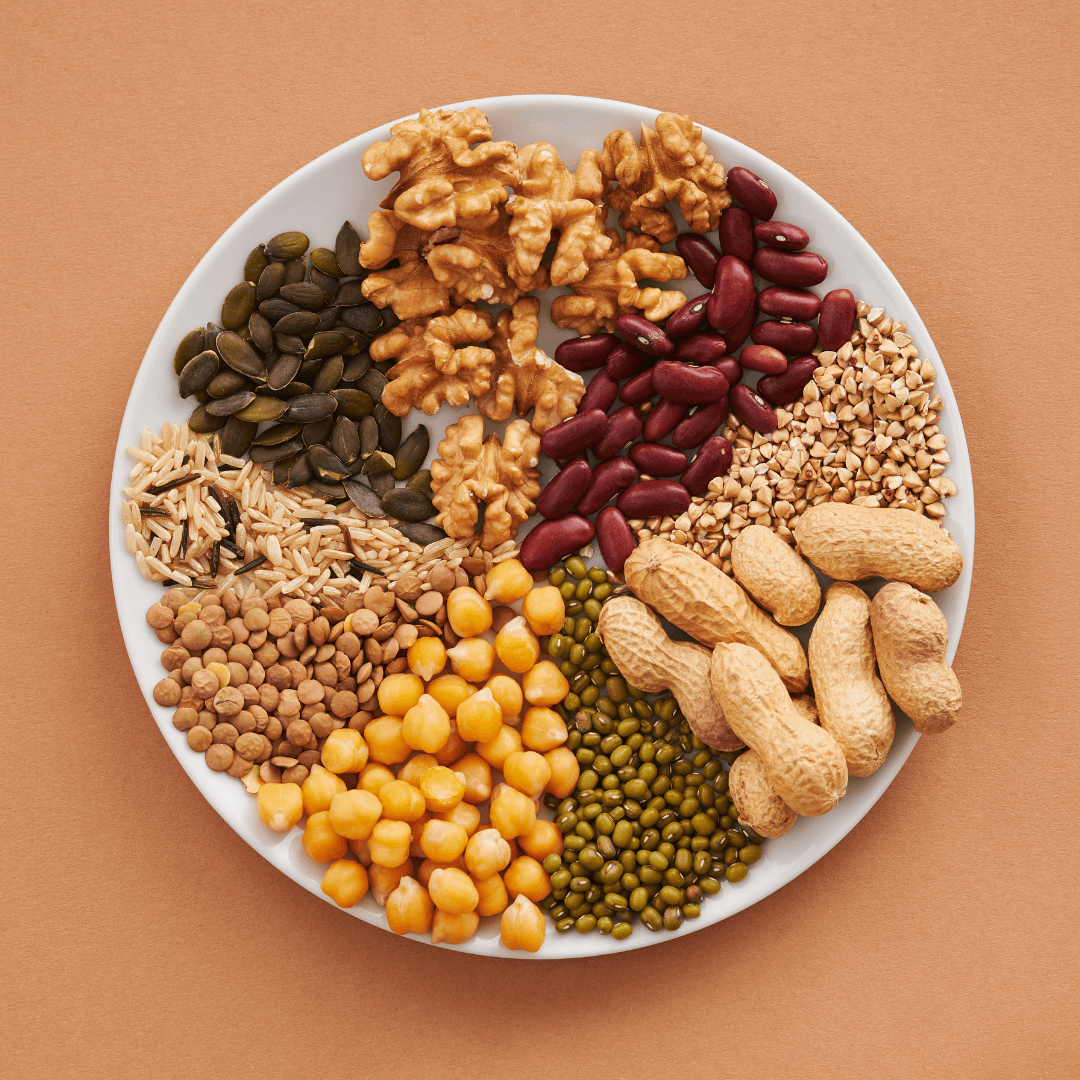
1. Legumes
Legumes emerge as stalwart allies in the battle against anemia. They are a cornerstone of plant-based nutrition,
Black beans, kidney beans, chickpeas, and lentils are excellent sources of non-heme iron necessary to create red blood cells.
These leguminous wonders provide a multifaceted approach to health because they combine fiber, protein, and various vitamins and minerals.
Their iron content, although non-heme, can be enhanced by strategic pairings with vitamin C-rich foods, amplifying iron absorption.
Beyond their nutritional prowess, legumes bring versatility, seamlessly integrating into salads, soups, stews, and spreads, providing both sustenance and satisfaction.
In the tapestry of a vegan diet aiming to conquer anemia, legumes weave a vibrant thread of nourishment and vitality, showcasing the harmonious synergy between ethical choices and optimal health.
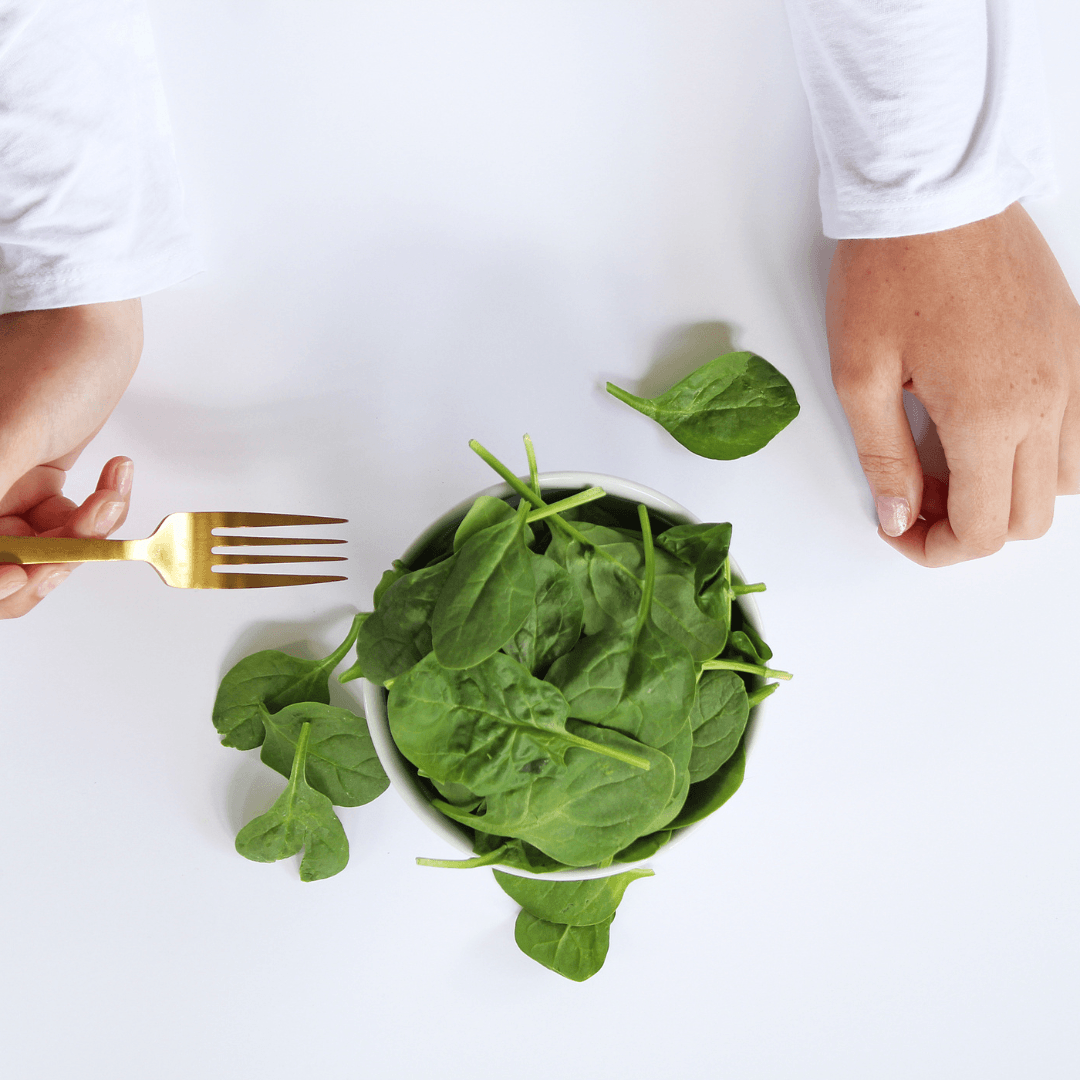
2. Leafy Greens
Leafy greens unveil their nutritional grandeur in the quest to combat anemia since they are verdant jewels of the plant kingdom.
Among them, spinach, kale, Swiss chard, and collard greens are luminous beacons of iron-rich sustenance.
Beyond their impressive iron content, these leafy powerhouses boast a wealth of vital nutrients, including folate, vitamin C, and antioxidants.
Fueled by chlorophyll, they contribute to the oxygen-carrying capacity of the blood, an essential facet of anemia management.
While their non-heme iron form may require support from vitamin C for optimal absorption, these greens showcase remarkable versatility in culinary creations.
Whether sautéed, blended into smoothies, or added to hearty salads, their inclusion strengthens the body. It elevates the palate, solidifying its role as a botanical ally in the journey to vibrant health.
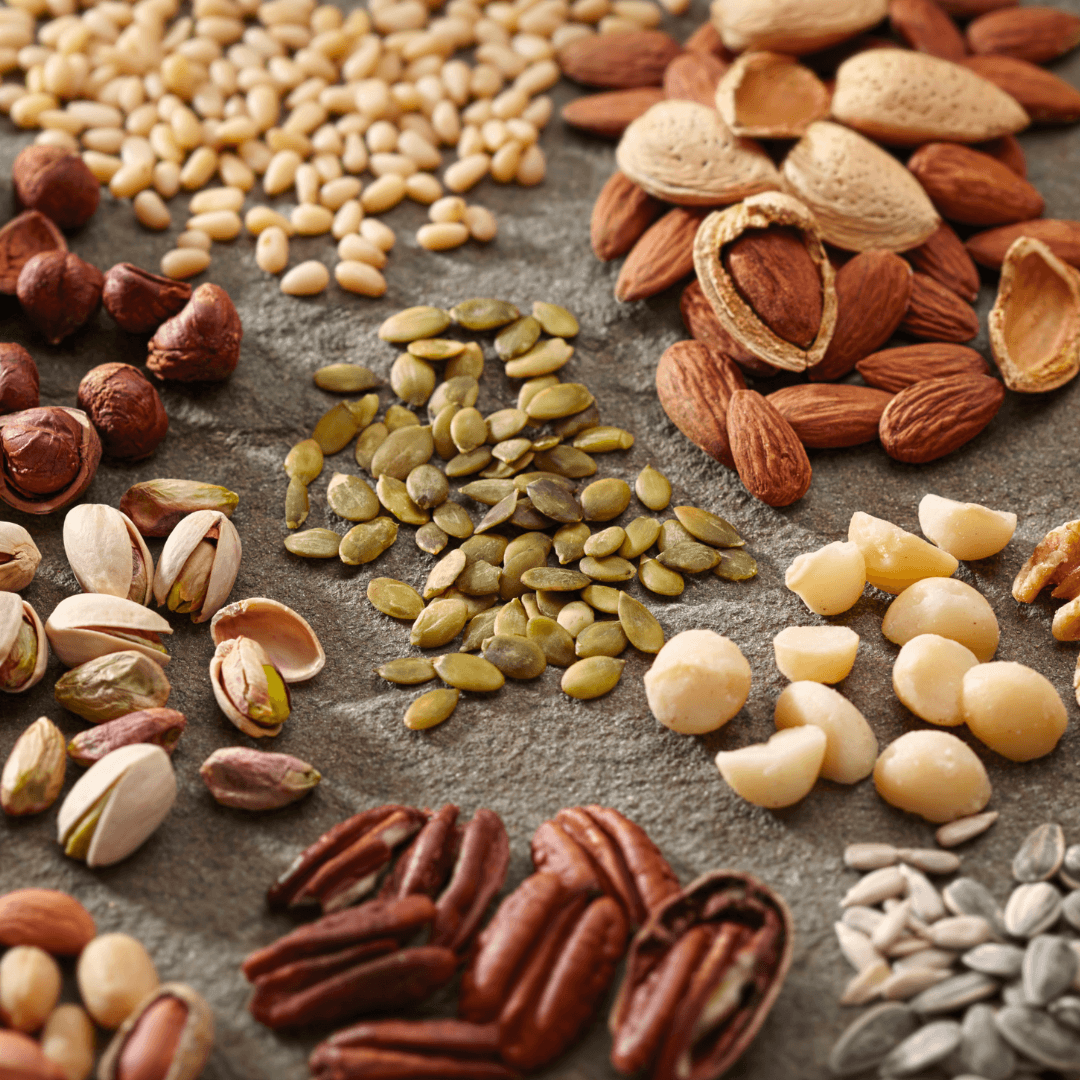
3. Nuts And Seeds
Nuts and seeds are vital in fortifying the vegan arsenal against anemia. They are miniature reservoirs of nutrient potency,
Within this treasure trove, pumpkin seeds, sesame seeds, hemp seeds, and cashews emerge as champions of iron content.
Alongside their iron contributions, these nutritional gems provide a mosaic of essential minerals, healthy fats, and protein, cultivating a robust foundation for overall well-being.
While their non-heme iron nature beckons for harmonious partnerships with vitamin C sources, their versatility knows no bounds.
Snack on pumpkin seeds, sprinkle sesame seeds over dishes, embrace the nutty allure of hemp seeds, or savour the creamy goodness of cashews – each bite enriches the body with iron's life-affirming essence.
As these nuts and seeds converge with a compassionate approach to nourishment, they epitomize the harmonious synergy between ethical choices and thriving, anemia-resistant vitality.
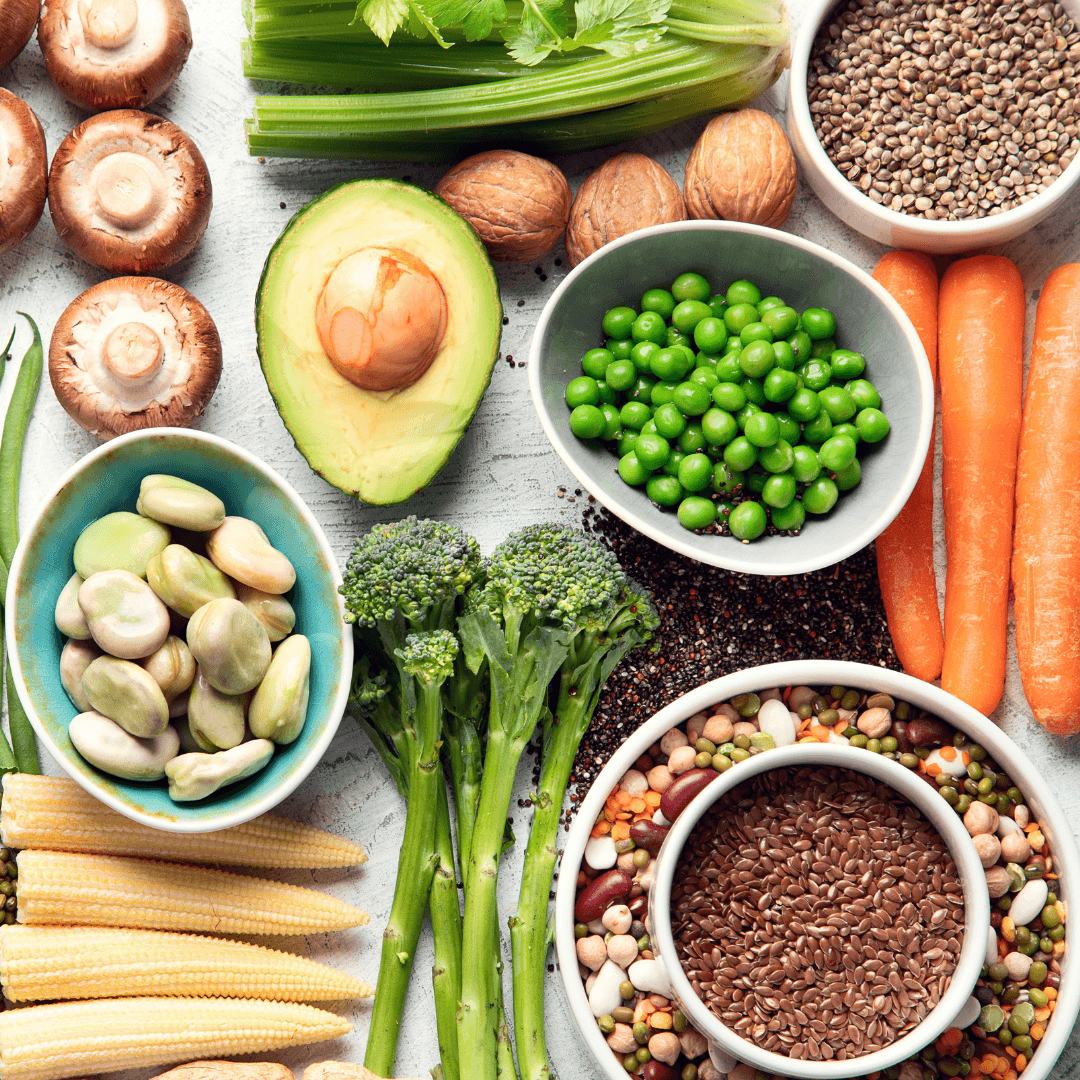
4. Whole Grains
Whole grains are steadfast companions on the journey to overcome anemia. They offer various iron-enriched options.
With its complete protein profile, Quinoa leads the charge, complemented by fortified cereals and whole wheat products.
These grains are a source of iron and a bounty of fibre, complex carbohydrates, and essential nutrients that foster sustained energy levels.
Fortified cereals, in particular, amplify their nutritional potency with added iron, often in synergy with other key vitamins and minerals.
Incorporating whole grains into your meals contributes to iron intake and introduces various flavours and textures to culinary creations.
Whether as a hearty quinoa salad, a comforting bowl of fortified cereal, or the embrace of whole wheat pasta, these grains seamlessly meld ethical dietary choices with anemia-defying nourishment, painting a vibrant tapestry of health and compassion.

5. Dried Fruits
Dried fruits, a concentrated manifestation of nature's sweetness, hold within their chewy folds a potent secret.
This iron-rich bounty resonates harmoniously with the vegan pursuit of anemia management.
Among these jewels of the pantry, apricots, raisins, and figs stand out as compact powerhouses of iron, offering a convenient and delectable means to infuse the diet with this essential nutrient.
As fresh fruits transform dehydration, their flavours intensify, and their nutrient content becomes densely packed.
The result is a trio of dried fruits that not only satiates the craving for something sweet but also delivers an iron payload that aids in red blood cell formation and oxygen transport.
Whether enjoyed as standalone snacks, blended into smoothies, or incorporated into oatmeal, salads, or yogurt, dried fruits integrate into diverse culinary endeavours, bestowing a touch of natural sweetness and nutritional richness.
In the symphony of a plant-powered diet, dried fruits play a harmonious note, their versatility and iron content uniting to compose a melody of flavours and health benefits that resonate throughout the day, celebrating the marriage of taste and vitality.
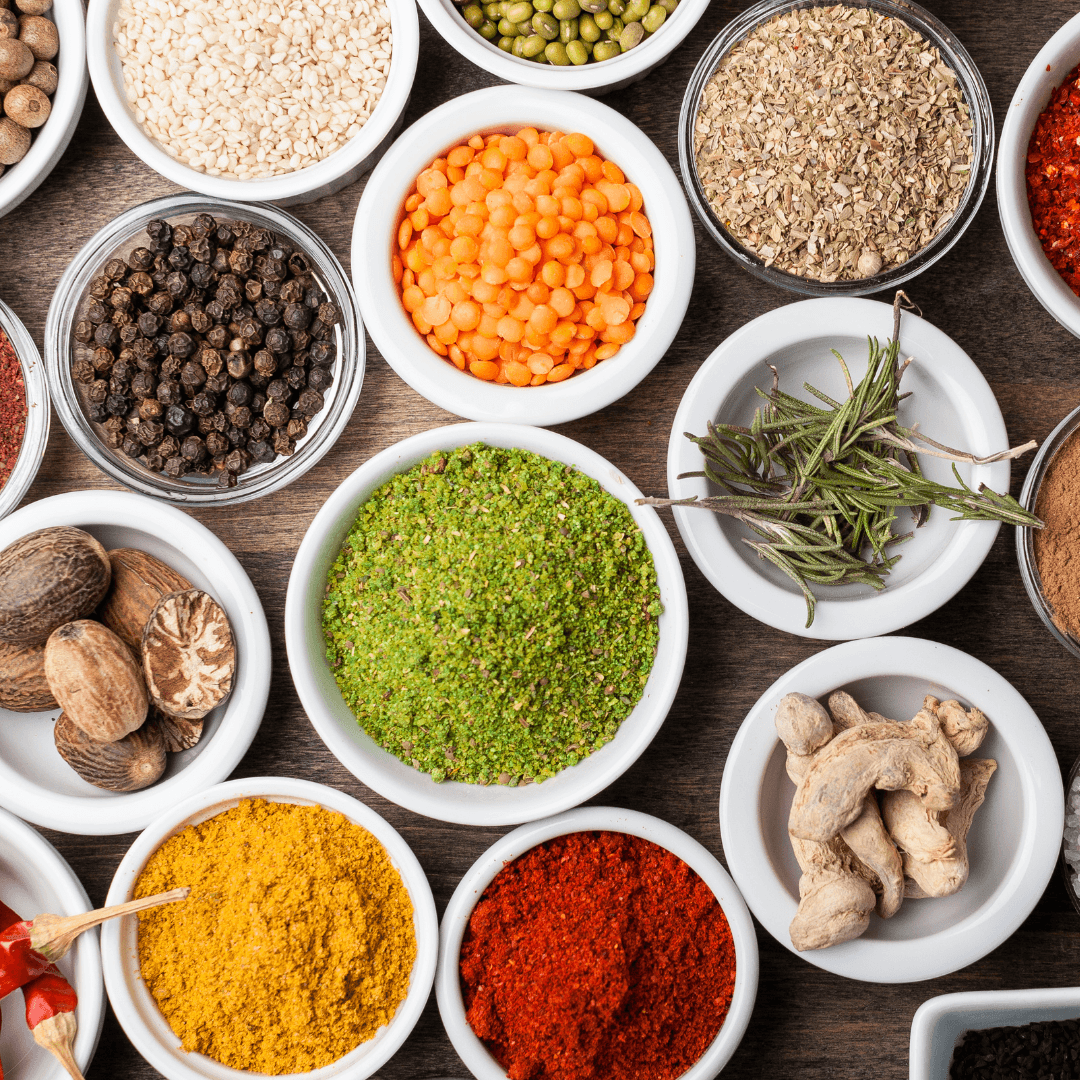
6. Herbs And Spices
In the intricate dance of culinary exploration, herbs and spices emerge as flavour enhancers and stealthy bearers of essential nutrients like iron, enriching taste and well-being.
Among these culinary alchemists, thyme, parsley, and cumin hold the spotlight, harbouring hidden treasures of iron that infuse your dishes with more than aromatic allure.
Thyme's fragrant earthiness introduces an iron-rich element that marries roasted vegetables and stews seamlessly.
Parsley, a verdant bouquet of freshness, delivers a delicate iron contribution, elevating salads and savoury dishes with its vibrant essence.
Cumin, the aromatic champion of many cuisines, not only tantalizes the senses but also imparts a subtle dose of iron that complements legumes and grain-based dishes.
The beauty of these herbs and spices lies in their unobtrusive nature – a sprinkle here and a dash there – enriching your creations with both nuanced flavours and valuable nutrients.
As you embark on this gastronomic journey, their presence invigorates the palate and nourishes the body, reflecting the seamless synergy between culinary creativity and nutritional wisdom in vegan anemia management.
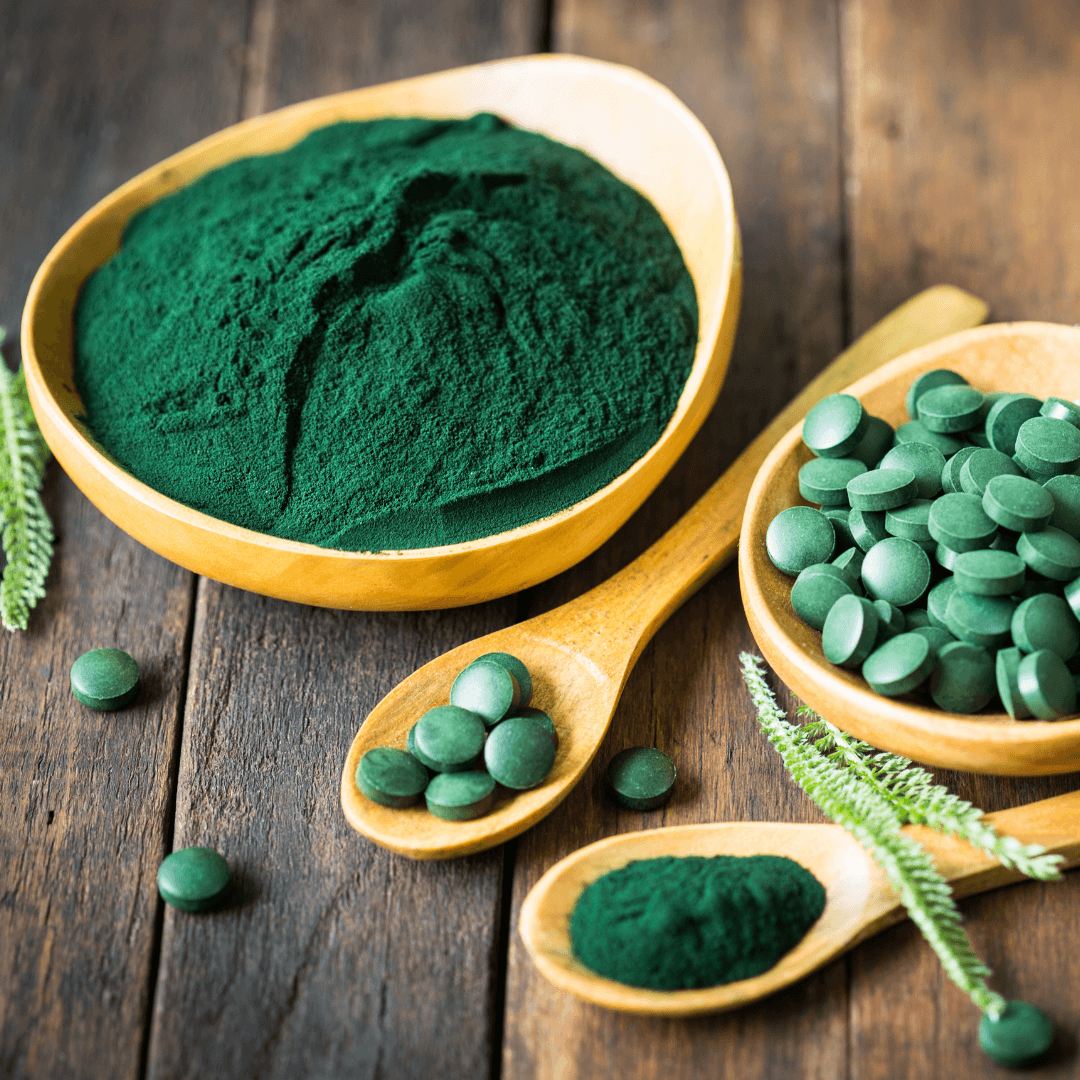
7. Spirulina And Chlorella
Within the tranquil depths of aquatic ecosystems, spirulina and chlorella flourish as dynamic health ambassadors, extending a verdant invitation to enhance the vegan arsenal against anemia.
These nutrient-dense algae, celebrated for their vibrant hues, embody a dual identity as iron sources and repositories of a diverse array of essential nutrients.
Spirulina, cyanobacteria known for its rich green-blue colour, boasts an iron content that harmoniously aligns with its role as a nutritional powerhouse, delivering a symphony of vitamins, minerals, and antioxidants that invigorate the body.
Chlorella, a vibrant green microalgae, complements its iron content with various nutrients, from B vitamins to chlorophyll, potent antioxidants, and nucleic acids.
These algae, available in various forms such as powders or supplements, empower individuals to harness the ocean's bounty in their pursuit of optimal health.
As spirulina and chlorella join the culinary narrative, they not only infuse dishes with distinctive colours but also impart a nutritional richness that celebrates the delicate balance of marine ecosystems and the thriving potential of the human body.
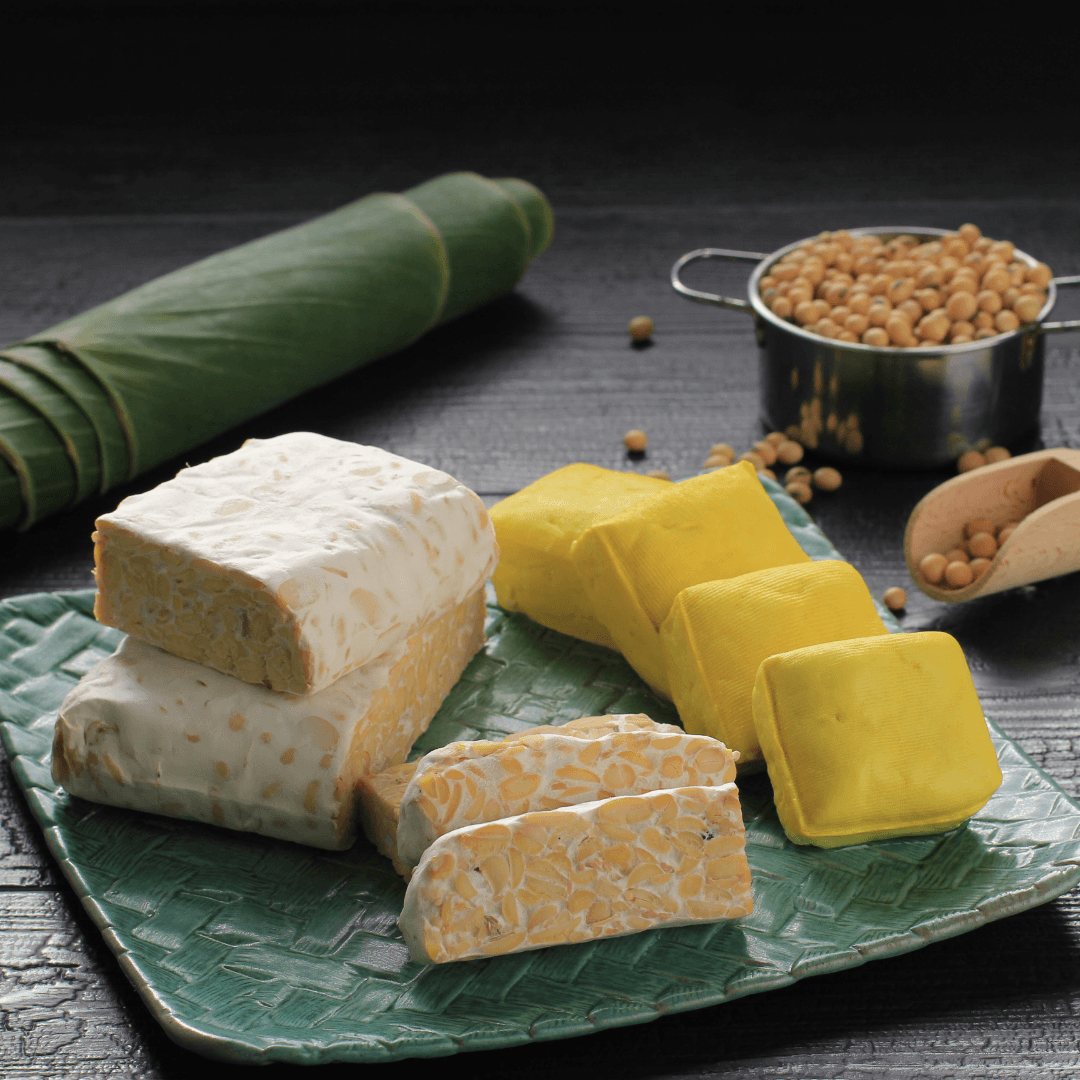
8. Tofu And Tempeh
Tofu and tempeh are versatile and nutrient-dense soy-based products that offer a valuable combination of protein and iron for individuals following a vegan diet.
Soy milk is curdled and pressed into firm blocks to create tofu, sometimes called bean curd.
It comes in various textures, from silken to extra-firm, making it suitable for culinary applications.
Tofu is not only a complete protein source, containing all essential amino acids, but it also provides a notable amount of iron.
When used in stir-fries, curries, salads, or even blended into smoothies, tofu can contribute to meeting your daily iron requirements.
Tempeh, conversely, is a fermented soy product with a firm texture and slightly nutty flavour. The fermentation process enhances its digestibility and nutrient availability.
Like tofu, tempeh is rich in protein and iron, offering additional benefits due to its fermentation.
It includes probiotics to help with digestion and nutrition absorption. Tempeh can be sliced, marinated, grilled, or used in sandwiches, wraps, and salads.
Incorporating tofu and tempeh into your meals can give you a dual benefit of protein and iron, essential for muscle growth, repair, and overall health.
While these soy-based options are excellent sources of iron, remember that enhancing iron absorption can be achieved by pairing them with vitamin C-rich foods, such as bell peppers, citrus fruits, or dark leafy greens.
This strategy increases iron bioavailability and ensures you receive a well-rounded nutritional profile from your meals.

9. Mushrooms
Mushrooms, particularly shiitake and oyster mushrooms, can be valuable to a vegan diet for addressing anemia.
While they may not be the most well-known iron sources, certain mushrooms contain this essential nutrient and can contribute to alleviating anemia symptoms.
Shiitake mushrooms, known for their savoury flavour and meaty texture, contain trace amounts of iron that can complement your dietary iron intake.
With their delicate flavour and versatility, oyster mushrooms provide a modest amount of iron.
Incorporating mushrooms into your meals can be as simple as sautéing them with garlic and adding them to pasta dishes, stir-fries, or risottos.
You can also use them as a topping for plant-based pizzas or blend them into soups and stews.
While mushrooms may not be as iron-rich as other plant-based sources, their inclusion can still contribute to your overall iron intake, especially when combined with other iron-rich foods.
It's worth noting that the iron content in mushrooms may vary based on their growth conditions and the type of mushroom.
To further enhance iron absorption, consider pairing mushroom dishes with vitamin C-rich ingredients like bell peppers, tomatoes, or citrus fruits.
This combination not only boosts the bioavailability of iron but also provides a well-rounded and flavorful meal that can play a role in managing anemia and supporting overall health.
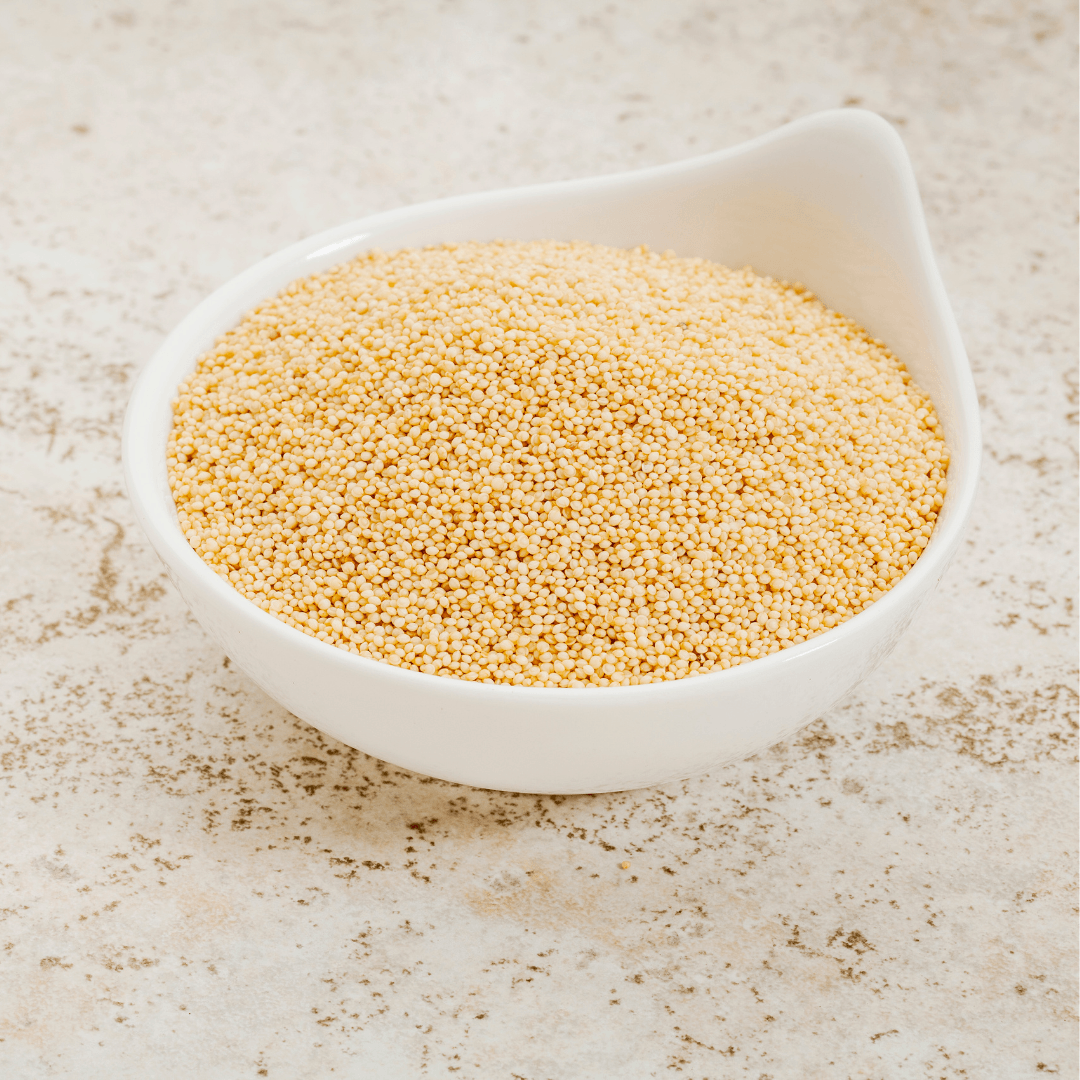
10. Amaranth
Amaranth, frequently referred to as a pseudo-grain, is a great option for anyone looking to enhance their iron consumption while consuming a range of minerals in a vegan diet.
This ancient grain is a source of plant-based iron and provides a range of other essential nutrients, including protein, fibre, magnesium, and B vitamins. Its iron content can contribute to addressing anemia, a concern for many vegans.
The iron in amaranth is considered non-heme iron, which means its absorption can be enhanced by consuming it alongside vitamin C-rich foods like citrus fruits, bell peppers, or broccoli.
Amaranth's versatility in the kitchen adds to its appeal. You can use it in various dishes, from breakfast porridges to salads, soups, and even plant-based burgers.
It is an intriguing substitute for other grains like rice or quinoa because of its nutty flavour and slightly chewy texture.
Incorporating amaranth into your diet can benefit from a diverse range of iron-rich foods.
Pairing it with ingredients like legumes, leafy greens, and seeds can contribute to meeting your daily iron needs effectively.
As with any dietary change, it's recommended to ensure a well-balanced and varied intake of nutrients.
Amaranth's contribution to your iron intake and overall nutritional profile makes it a valuable component of a plant-based diet that supports optimal health, including addressing anemia concerns.
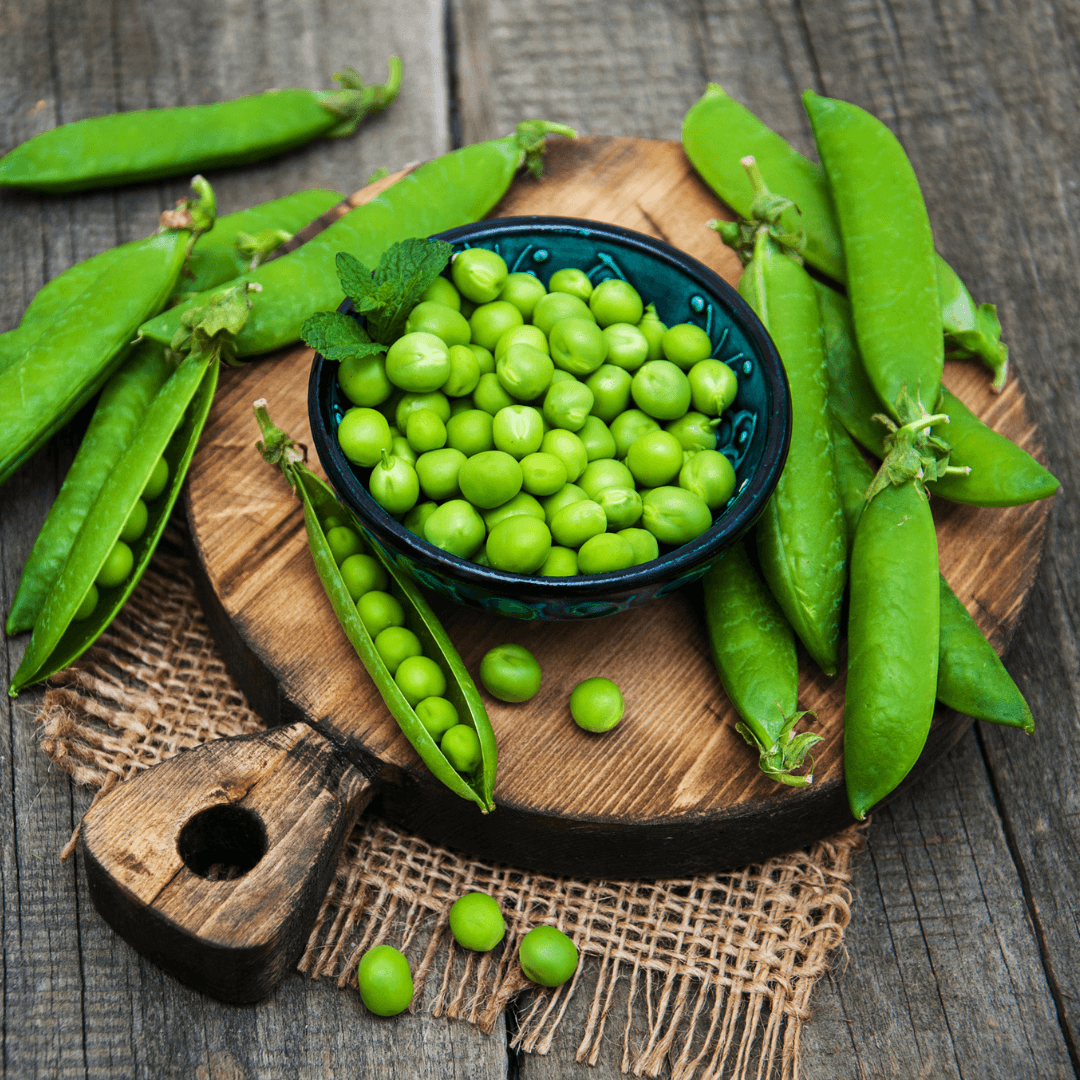
11. Green Peas
Though often overlooked, green peas offer a surprising and valuable source of iron in a plant-based diet.
These vibrant legumes provide a moderate amount of iron and a range of other essential nutrients, including protein, fiber, and various vitamins and minerals.
Despite their relatively small size, green peas can significantly contribute to addressing iron deficiency and supporting overall health.
Even though the non-heme iron present in plant foods like green peas may not be as easily absorbed as the heme iron found in animal goods, there are practical ways to improve its absorption.
Pairing green peas with vitamin C-rich foods like citrus fruits, bell peppers, or strawberries can boost the absorption of non-heme iron, making it more available for your body.
Green peas are incredibly versatile and can be easily incorporated into various dishes. They can be added to salads, stir-fries, soups, stews, curries, or a base for plant-based dips.
Their slightly sweet and refreshing flavour complements both savoury and slightly tangy profiles, making them an adaptable ingredient that can enhance the nutritional value of many meals.
As with any dietary component, balance and variety are key. Combining green peas with other iron-rich plant foods like lentils, beans, fortified cereals, and dark leafy greens can help ensure you're effectively meeting your daily iron needs.
By including green peas in your diet alongside a diverse range of nutrient-rich foods, you can boost your iron intake and contribute to a well-rounded and nutritionally robust plant-based lifestyle.
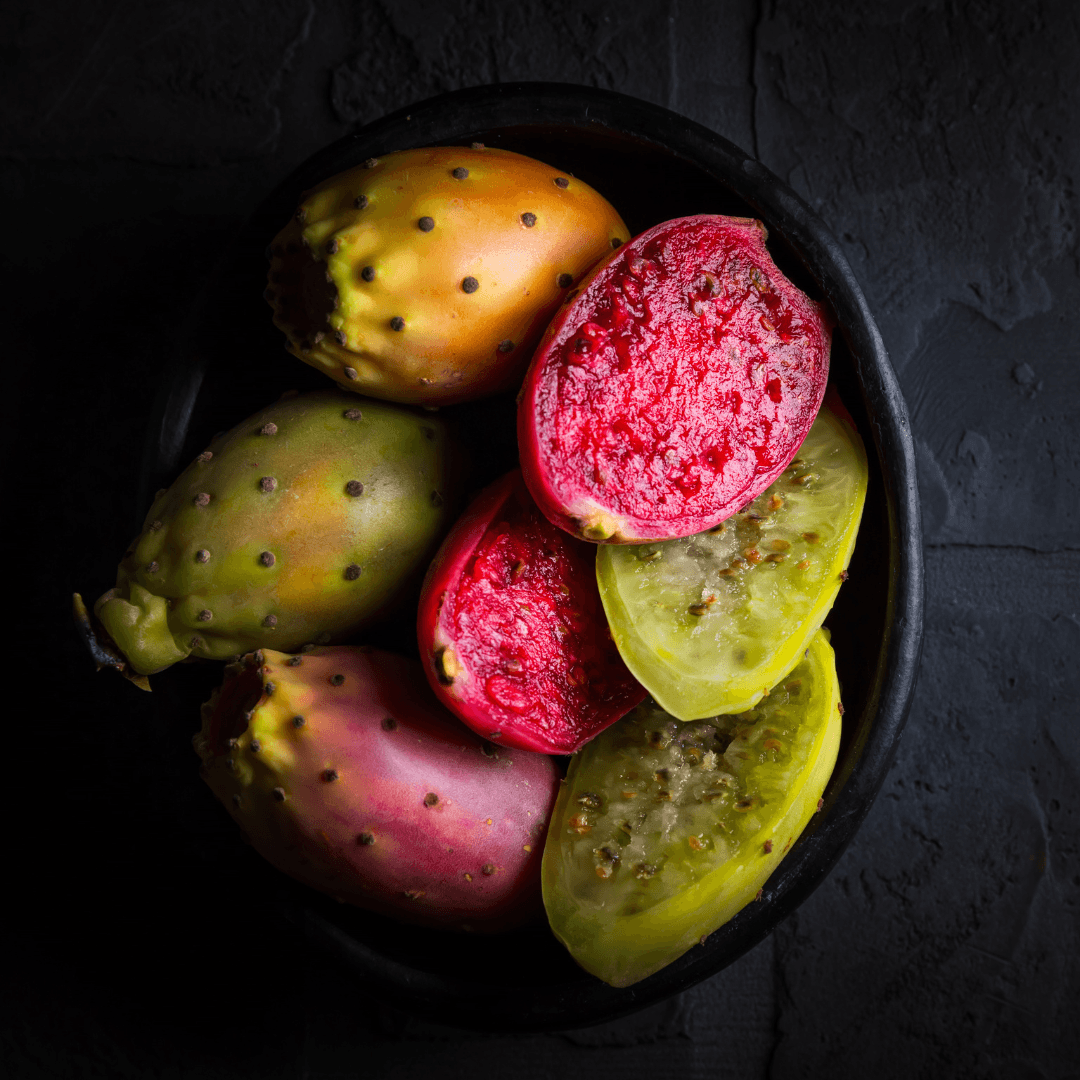
12. Prickly Pear
Prickly pear or cactus fruit is a unique addition to the array of iron-rich plant foods.
This vibrant and exotic fruit stands out for its striking appearance and offers a notable iron content, making it a potential ally in addressing anemia within a vegan diet.
Alongside its iron content, prickly pear boasts a range of beneficial nutrients such as dietary fiber, vitamins, minerals, and antioxidants.
Like in many plant-based sources, the iron in prickly pear is non-heme iron, which may have slightly lower absorption rates than animal sources.
However, this should be sufficient for its consumption, as there are effective strategies to optimize iron absorption.
Pairing prickly pear with vitamin C-rich foods or supplements can enhance the uptake of non-heme iron, thereby supporting its utilization by the body.
Incorporating prickly pear into your diet can be a delightful and nutritious experience. Its mildly sweet and subtly tangy flavour profile can add a refreshing twist to sweet and savoury dishes.
Prickly pears can be enjoyed fresh, added to salads, blended into smoothies, or used as a garnish for various culinary creations.
It's important to emphasize that while prickly pear is a valuable source of iron, achieving a well-rounded diet is essential for maintaining overall health.
Combining prickly pear with other iron-rich foods and adopting a variety of nutrient-dense plant-based options can contribute to a comprehensive approach to managing anemia and promoting vitality.
By embracing the potential benefits of prickly pear as part of a balanced dietary pattern, individuals following a vegan lifestyle can enhance their iron intake and support their overall well-being.
Conclusion
In the tapestry of plant-based nutrition, the anemia story resolves through a harmonious blend of ethical choices and nutrient-rich sustenance.
As we reflect on the myriad sources that the vegan realm offers to combat anemia, a profound truth emerges – our dietary decisions possess the power to shape our health and the world around us.
We fortify our bodies by incorporating various iron-rich plant foods, fortified options, and strategic nutrient combinations, contributing to a more compassionate and sustainable future.
Ultimately, the tapestry of vegan sources for anemia paints a picture of empowerment. It's a reminder that by embracing a compassionate diet, we address our health needs and contribute to a world where our plates reflect our values.
In this world, compassion, vitality, and harmony coexist in perfect balance. As we take this knowledge forward, we step into a realm where our choices matter, every bite becomes a statement, and the pursuit of well-being extends beyond ourselves, encompassing the world we share.
I trust you enjoyed reading the article about Best Vegan Sources For Anemia. Please stay tuned. More blog posts will be posted very shortly.
JeannetteZ
>>>Please click here to read my Vegan Travel Guides To World Destinations<<<
>>>Want To Learn How To Create Delicious, Cruelty-Free, Healthy AND 100% Vegan Meals? Try These Awesome Vegan Cooking Courses With A Free 7-DAY MEMBERSHIP<<<
Your Opinion Is Important To Me
Do you have thoughts, ideas, or questions? I would love to hear from you. Please leave me your questions, experiences, and remarks about this article on Best Vegan Sources For Anemia in the comments section below. You can also email me at Jeannette@LivingTheVeganLifestyle.org.
Disclosure
This post may contain affiliate links. I earn from qualifying purchases as an Amazon Associate and other affiliate programs. Please read my full disclosure.
Here are the links to some of my favourite articles:
A Brief History Of Veganism – Know Your Roots
